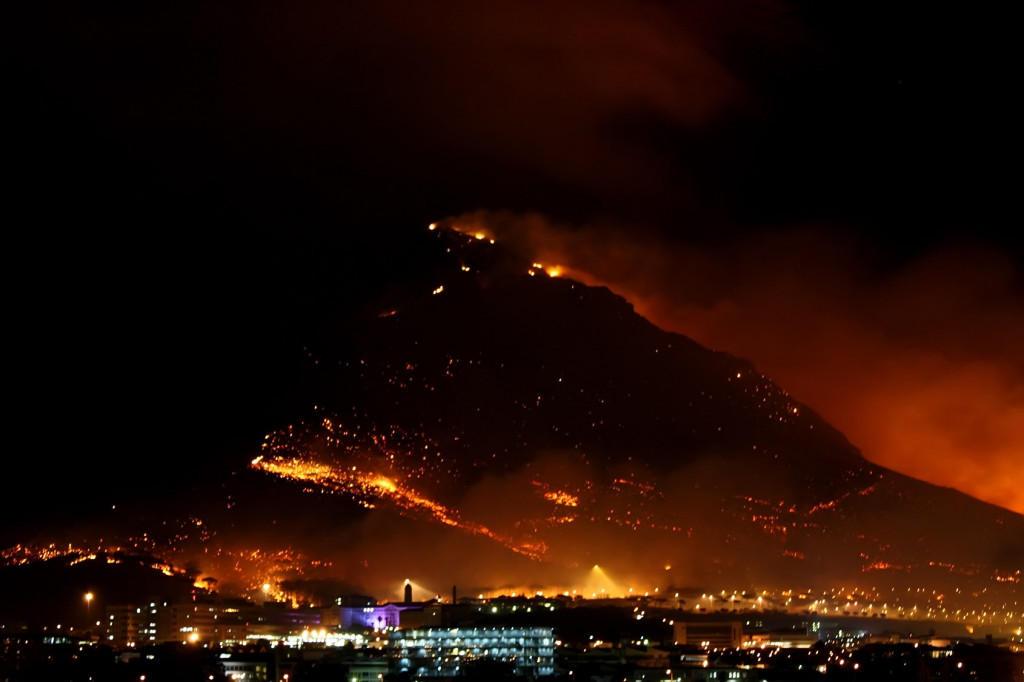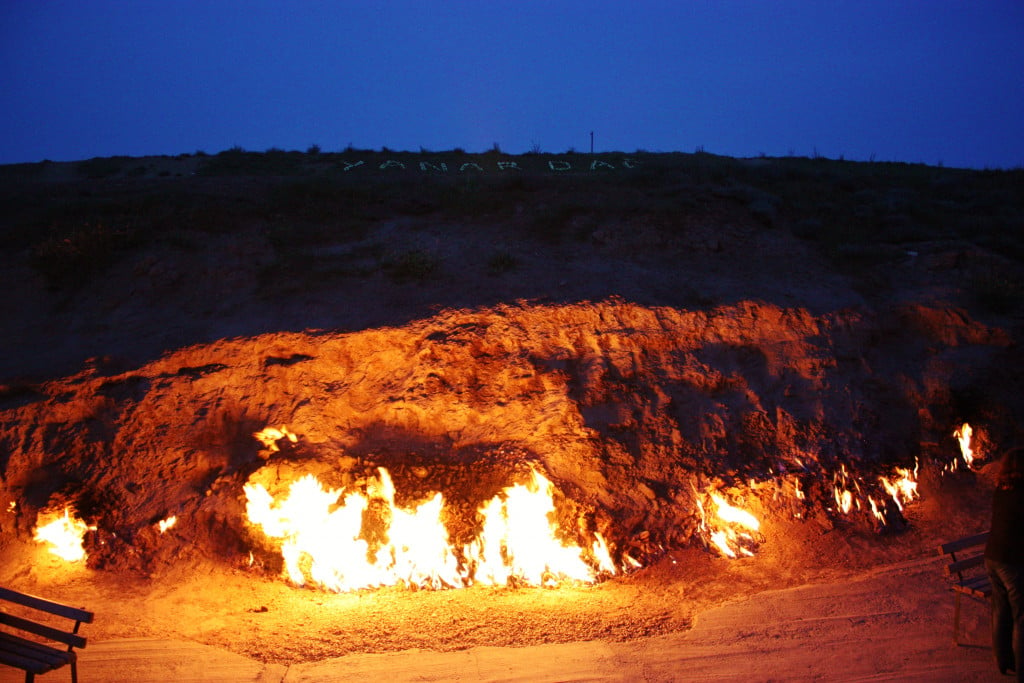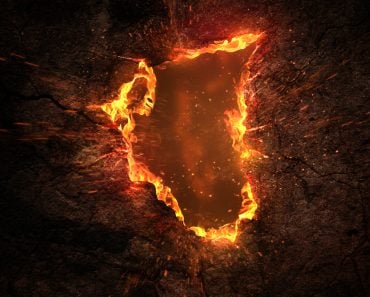Table of Contents (click to expand)
Certain fires continue burning around the world and have truly stood the test of time: these are the fires at Yanar Dag, Burning Mountain, and Smoking Hill.
When we think of fire, we likely imagine a hot, burning mass of heat and light with the power to lap up or incinerate anything in its way. The beauty of these glowing flames is in their inevitable demise, as they lose their power once extinguished. Homo sapiens in the Early Stone Age would have thanked their stars if the fire they accidentally discovered lasted forever, and the Human Torch would be pretty much indestructible.
However, it turns out that there are some fires that have been burning for thousands of years and continue to do so, no matter what storms or precipitation Mother Nature may throw at them.

A fire requires three sources to stay alive: oxygen, fuel, and a source of heat. If these three things don’t run out, it could be theoretically possible for a fire to burn forever. We see glimpses of this in long-burning wildfires, where expansive forests act as unlimited fuel sources, making it practically impossible to put out these fires.
Here we look at a few such fires that have come to play essential parts in cultural and religious histories, and are also considered popular tourist attractions (thanks, capitalism).
Recommended Video for you:
1. Yanar Dag (Fire Mountain)
The country of Azerbaijan has earned itself the moniker of the ‘Land of Fire’ over the years, owing to the spontaneous fires that can pop up in different places across its mountains and seas; even the state emblem features red tongues of flame in the center. Azerbaijan is also known to be the birthplace of Zoroastrianism, one of the oldest religions in the world, and one centered around a sacred belief in fire.
The phenomenon of these natural fires, aside from being an element of amazement, occurs due to the country’s plentiful gas reserves. Most of these fires eventually burn out due to the depletion of these resources and tectonic shifts, but the fire at Yanar Dag is one of the most miraculous fires still burning to this day. The flames continue to burn even in winter, as the snow never reaches the ground.

The first known record of its existence is cited in the travels of Marco Polo in the 13th century when he visited the city of Baku. This fire has been burning continuously ever since and forms a wall of fire along the edge of the mountain. It is now a top-rated tourist attraction and protected by the State Historical, Cultural, and Natural Reserve.
2. Burning Mountain
Eastern Australia is abundant in the components needed to sustain fires: the fuel comes in the form of excessively dry vegetation, caused by the weather conditions, while the heat source is typically lightning or human causes. Although most regions of Australia experience such fires, the eastern and southern coasts, where most of the population reside, are notorious for having the most fires in the country.
The most infamous of these is one of the world’s longest-burning fires, which has been lit for the past 6,000 years, under the coal seam in Mount Wingen, a hill in New South Wales. The word ‘Wingen’ itself is derived from the native language of the Wonnarua tribe of the Aborigines and means “fire”.
The exact cause of the fire is unknown, but scientists suggest that it could be due to a lightning strike on the seam. These coals don’t have flames like a usual fire, but glow with heat at a temperature of over a thousand degrees Celsius, 30 meters under the surface. There are vents in the surface that allow smoke and a sulfurous smell to escape. The Burning Mountain Nature Reserve is covered with forests, except at the coal seam, which is 5-10 meters in diameter.
The exact age of the embers is not known, but 6,000 years is considered a low-end probability. It’s possible that it could have been burning for a hundred thousand years or more, and could continue to burn for thousands more.
3. Smoking Hills
These hills covering the coastline in the Canadian Arctic have been described as “hellish looking” in appearance, and with good reason. Even though the area is pretty much unknown, this fire has been burning for roughly 7,000-10,000 years and has been mentioned in the Legends of the Inuvialuit history, who believed that the smoke of these fires rose from the campfires of people who lived in the ground.
The first sighting of this was made by Irish explorer Robert McClure during the Franklin expedition. It is said that he brought back a sample of one of the rare minerals found there, but it was so hot that it burned a hole in his desk.

The appearance of this place makes it look even scarier. The mountain is surrounded by the remote Arctic Tundra, an area mostly untouched by human populations, but the size of the hills is a stark contrast. The ground is black and covered in deep mud, which releases a strong smell of hydrogen sulphide gas and billows smoke from vents. The air in the region is so toxic that stepping in without protective gear could burn your eyes or throat, and could even kill you if you got too close! Even boots will start to melt away if you spend too long on this volatile ground.
A Final Word
Such eternal flames are rare, although there are a few other such places across the globe, all of which hold a place of reverence for different religions, cultures, and folklore traditions. They each exist f0r different reasons, but they remain as beautiful feats of nature that have held us in awe for centuries, along with a good amount of intrigue, mystery, and a healthy dose of fear!












